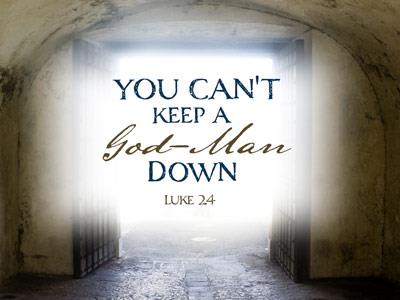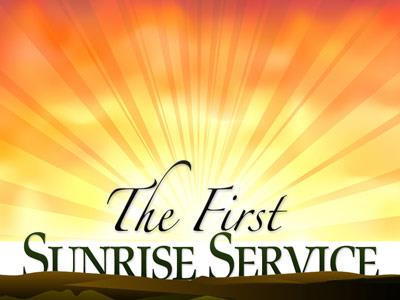-
Raising The Dead.
Contributed by Christopher Holdsworth on Dec 8, 2022 (message contributor)
Summary: I AM the resurrection and the life.
RAISING THE DEAD.
John 11:17-45.
By the time Jesus got to Bethany, Lazarus had been dead for four days (John 11:17). The professional mourners attended the home of Martha and Mary (John 11:19). Ever the practical hostess, Martha went out to meet Jesus (John 11:20).
Martha’s outlook oscillates between bewilderment and faith (John 11:21-22): the bereaved sister cannot decide whether to rebuke the Lord for not being there sooner, or to express relief that at least He is here now. Surely Jesus could have cured His friend before it came to this? Yet even now, is there not something He might yet do?
Jesus said, “Thy brother shall rise again” (John 11:23). Martha believed already in “the resurrection at the last day” (John 11:24), but Jesus offered Himself in the here and now as “the Resurrection and the Life” (John 11:25).
As usual in the “I AM” sayings, Jesus is pointing to Himself with the name of God. “I AM” (in Hebrew, YHWH, the name of God) – is ‘I AM the One who was, and is, and is to come’ (cf. Revelation 1:8).
The title “The Resurrection AND the Life’ points to the future, certainly; but it also points to the past and the present.
As the Word of God, Jesus was there ‘in the beginning with God’ (cf. John 1:2). He was there when God created the world (cf. Genesis 1:3; John 1:3).
Jesus had been imparting life throughout His ministry through spiritual uplift (Nicodemus, the woman at the well, teaching the people); physical provision (wine at the wedding, bread and fish for the thousands); and physical healings (a dying boy, a man who had been paralysed for many years, a man born blind.)
Jesus had said, ‘I am come that they might have life, and have it more abundantly’ (cf. John 10:10). In other words, Jesus offers fulness of life – eternal life, indestructible life, resurrection life beginning in the here and now. When we begin to believe we have already commenced our ‘eternal’ life.
Jesus does not deny the reality of physical death: He says, “though he were dead” (John 11:25), confronting it. The righteous do die, but they have a hope which reaches beyond death. Neither should we mourn as the world mourns, who do not share in that hope (cf. 1 Thessalonians 4:13).
Yet, “he that believeth in me, though he were dead, yet shall he live: And whosever liveth and believeth on me shall never die. Believest thou this?” (John 11:25-26).
In other words, “he that believeth in me” is represented here by Lazarus, physically dead and lying in the grave. “Though he were dead” confronts the reality of that physical death.
When Christians do die, they remain united to Christ by faith - and death can only hold them for that short season until He calls them forth from the grave. Do you believe this?
Martha’s creed was perhaps not yet ready to embrace all the possibilities of a present resurrection. She did, however, acknowledge that Jesus is the Christ (the Messiah, the anointed one); the Son of God that was to come into the world (John 11:27). Martha went to get Mary whom she said Jesus was calling (John 11:28).
Hearing of His call Mary ran to Jesus, prostrated herself at His feet, and wept in bewilderment at what had taken place (John 11:29; John 11:32). Jesus became vexed in His spirit, a champion fired up for the fight to the death against death’s hold upon mankind (John 11:33). It is as if the Passion had already begun.
What followed is historic: Jesus went to the tomb of Lazarus and wept tears not of uncontrollable grief, but of righteous anger against the violent tyranny of death (John 11:35). The mourners who had followed Mary from the house recognised in this the love which Jesus had for Lazarus, which is true, but others wondered at Jesus’ seeming inability to prevent this tragedy (John 11:36-37).
Far from being unable to prevent death, however, Jesus was about to overcome death in what was to be the seventh and final significant “sign” (prior to Jesus’ own death and resurrection) in John’s Gospel.
Still fired up for the fight, Jesus approached the cave where the body was laid, and commanded that the stone should be rolled away (John 11:38-39). At this point the ever-practical Martha remonstrated with Him because by now it was too late, humanly speaking, to do anything for Lazarus. After four days, according to the common perception, corruption would have set in, and the spirit would have left the body for good.
Yet Jesus reminded Martha of His promise that if we have faith we will see the glory of God (John 11:40). The stone was removed, and Jesus prayed a public prayer which was designed to encourage faith in the hearers (John 11:41-42). He called Lazarus by name, just as the Good Shepherd does call His sheep by name (cf. John 10:3), and the dead man rose from the dead (John 11:43-44).
Then many of Mary’s attendants believed in Jesus (John 11:45).

 Sermon Central
Sermon Central



